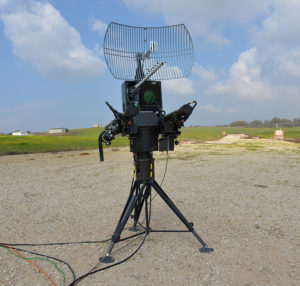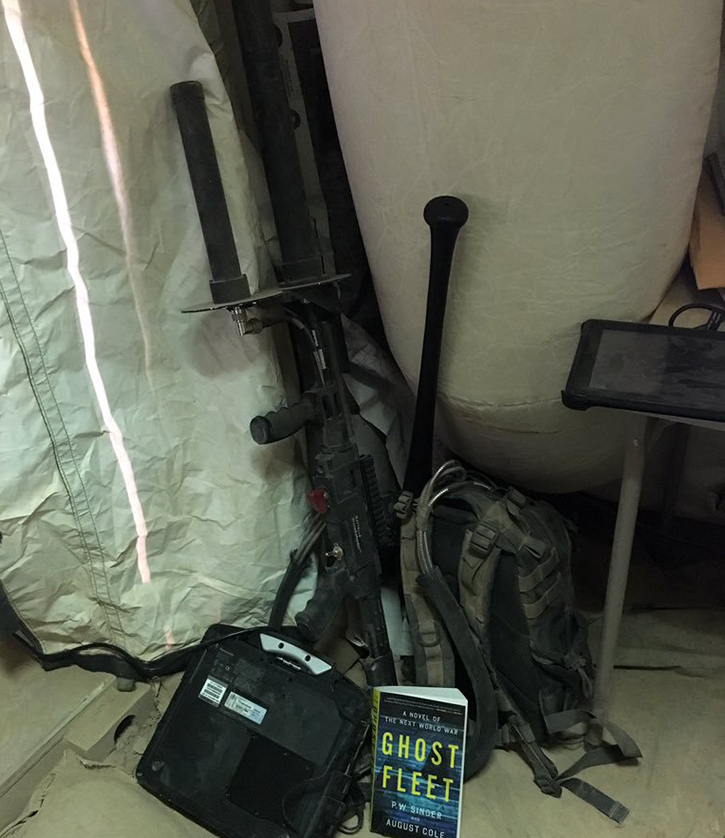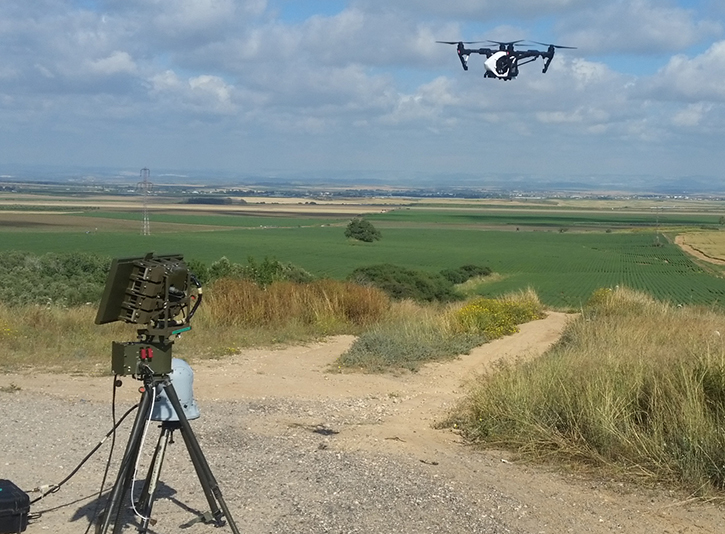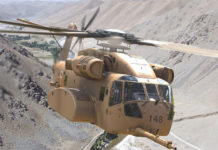
The growing use of improvised, weaponized drones triggered a new interest in counter-UAV capabilities. Such countermeasures are required to warn the unit on the presence of drones in their area and have the ability to disrupt and defeat those drones when required. Until now, such unavailable were not available in the region. Although US forces have deployed some off-the-shelf C-UAV capabilities in the Middle-East since 2016, most of these technologies were not exportable to allied nations.
The US Army has already fielded various vehicle-borne UAV countermeasures. One such solution is the C-UAS Mobile Integrated Capability (CMIC) mounted on a reconnaissance Stryker vehicle. The system can identify, track and jam UAVs using the additional equipment added for the CMIC mission. Two CMIC vehicles deployed to Eastern Europe for operational evaluation in March 2017. More vehicles could also support US forces that have entered Syria recently.
A C-UAV radar offered by IAI Elta Systems is the Drone Guard, an integrated system comprising a low-level air defense radar and jammer. One of the first C-UAV system developed in Israel ‘Drone Guard’ went through an extensive test series proving its effectiveness against a variety of different drones in various scenarios, including simultaneous multiple drone penetrations or attacks. Other radars from Elta are integrating the C-UAV mission with Counter-Rocket, Artillery, and Mortar (C-RAM) capability, providing the most comprehensive protection for tactical units.

Other capabilities are currently under development through Defense Advanced Research Projects Agency (DARPA), under a technology development program seeking solutions for the protection of dispersed, stationary ground or naval forces. Possible solutions would include sensors and effectors capable of defeating targets that cannot be engaged with current weapons (missiles, or gun). Such capabilities would involve customized radars, electro-optical or acoustic sensors, cyber and electronic warfare effectors, customized missiles and cannon fired projectiles and directed energy weapons.
Counter-UAV – Soft Kill Methods

The appearance of weaponized drone dramatically raised the level interest in drone countermeasures. Many suppliers are already offering such systems, but only a few are operational and validated against those new threats.
Most of the systems were designed to operate in a peaceful environment, and secure domestic or industrial areas or run by law enforcement and the secret service in VIP protection. Others utilizing cyber hacks are designed to defeat specific threats.
Typical systems include a radar and EO/IR sensor that detects drones and emitters and employ jammers over several spectral bands to target the drone’s datalink channels and GPS. Most of these systems will not be useful for anti-drone operations in a combat environment as they are designed to operate in the civil environment. ‘Drone Guns’ are being used to protect combat units against the terrorists attack drones. Gun-like countermeasures like these were developed in the USA by Battelle and Lockheed Martin, but are now available from many manufacturers outside the USA, including the UK, Australia, France, and China. The main advantage of such counter-drone weapons is the simplicity. Unlike the more sophisticated sensor-based countermeasures, ‘drone guns’ rely on visual identification for targeting of the drone (including straight up). Aiming the hand-held rifle-like electronic jammer at the target in a ‘point and shoot’ style is enough to direct the jammer to block the drone’s command link, ‘hijack’ and bring it to forced landing or cause it to crash.

Jammers are designed to disrupt the drone’s communications lines (control uplink or video downlink) by transmitting high-power noise at the same frequency of the signal connecting the drone and its pilot. Jammers can be effective against drones over several kilometers away. Jammers will be effective the further away the drone is from the pilot and closer to the jammer. Commercial drones often use the public frequency bands of 2.4Ghz or 5.8Ghz for this purpose. Public frequencies meaning that drone jammers will not interfere with manned aircraft, cell phones, public broadcasts, or other dedicated radio bands. Since these frequency bands are extremely busy, new commercial drones are using these frequencies but have added frequency hopping capabilities to overcome interference from other emitters (such as jamming). As a result, standard jamming will not be useful against such systems.
Related feature: Drones Hacked to Become the Ultimate IED



















